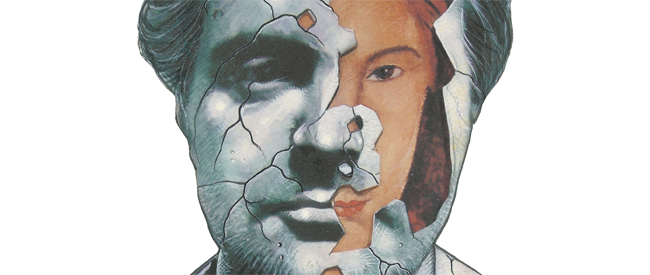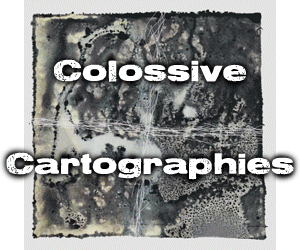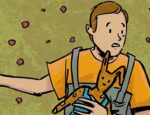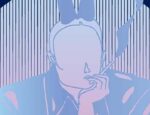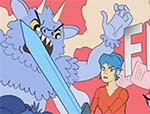A genius for the ages, largely unrecognised in his own time; an egotistical monster who rails against the world and pushes away those closest to him; a dissolute rake, living in a haze of intoxication.
Anyway, that’s enough about me. (Ba-dum-tish.)
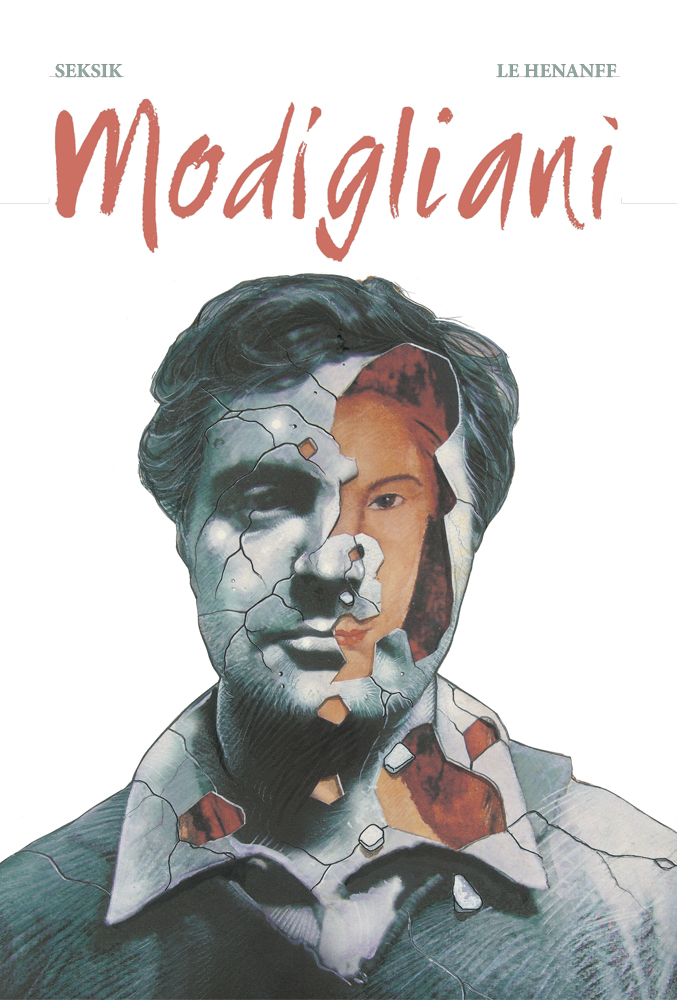 Let’s talk instead about Amadeo Modigliani, the painter and “prince of bohemia” whose final years are documented in this graphic novel by Laurent Seksik and Fabrice Le Hénanff (translated from French by Joel Anderson and Stéfane Houssier).
Let’s talk instead about Amadeo Modigliani, the painter and “prince of bohemia” whose final years are documented in this graphic novel by Laurent Seksik and Fabrice Le Hénanff (translated from French by Joel Anderson and Stéfane Houssier).
Modigliani’s Nu Couché sold last year for $170m – the second highest price ever paid for a painting at auction* – less than a century after the painter died in near destitution at the age of 35. So it goes.
(*Just a few bob short of the $179m stumped up for Picasso’s Women of Algiers earlier in the year.)
Following a simple progression from the years of the First World War to Modigliani’s demise in 1920, the book isn’t plot-heavy. Instead, it highlights the complexity of its subject – an artist who threw off his bourgeois Italian background and flung himself into a frenzy of productivity in the impoverished but creatively fertile milieu of Montmartre.
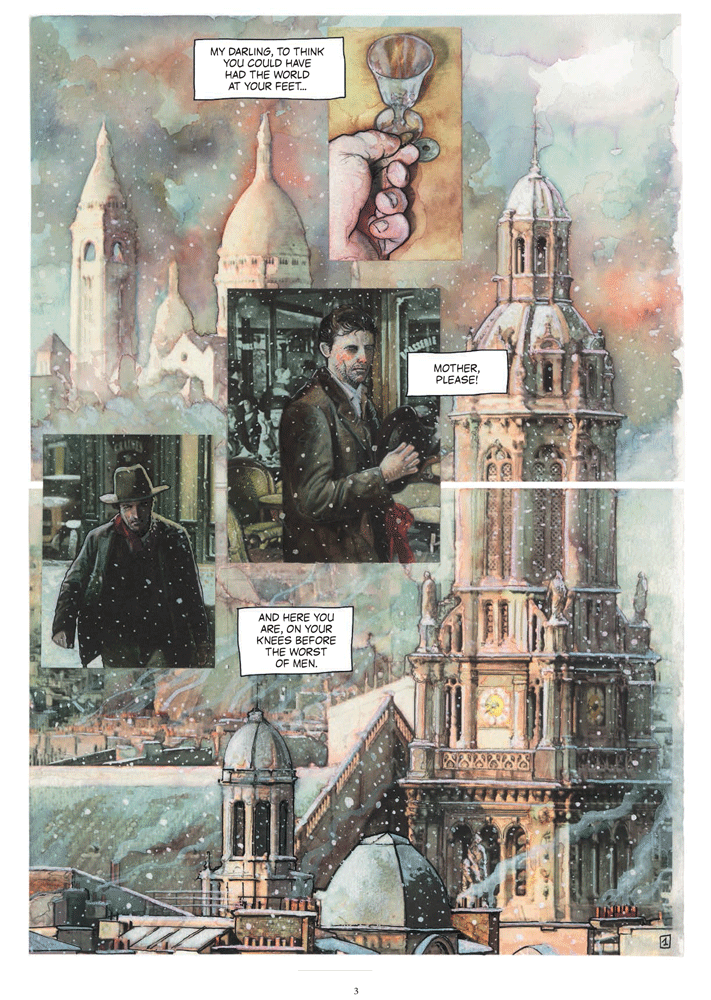 Written off as “the worst of men” on the first page by the mother of his young girlfriend, Jeanne, we soon see Modigliani in full flow, fulminating about a negative review of his work by English critic Clive Bell.
Written off as “the worst of men” on the first page by the mother of his young girlfriend, Jeanne, we soon see Modigliani in full flow, fulminating about a negative review of his work by English critic Clive Bell.
And in his offhand treatment of Jeanne and his art dealer, Leopoldo Zborowski, it soon becomes apparent that the devotion others show to the painter is barely reciprocated. As soon as “Zbo” hands over the proceeds of a (rare) sale, Modigliani abandons his partner for what the dealer calls his “mistresses… absinthe, rum, cocaine, opium, hashish…”
Later, while posing for him, Jeanne also realises that although he’s ostensibly painting her portrait, he’s looking through her to something altogether darker: “I love being your distraction… I love the sparkle in your eyes when you paint me… even if I know you’re not looking at me, and not painting me, you’re gazing into the abyss deep within you.”
In a Q&A with Paul Gravett at London’s Institut Français, Laurent Seksik spoke of Modigliani as exerting the same fascination as one of Shakespeare’s tragic heroes, and the character presented here certainly has a fatal flaw or two to go with his talent.
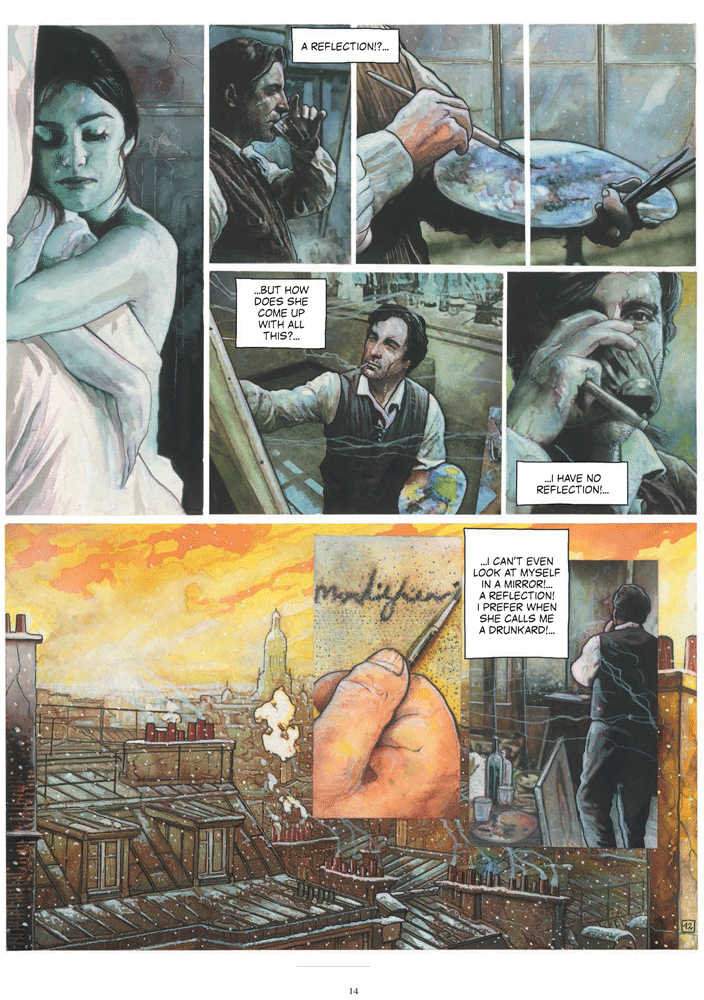 Riddled with tuberculosis, his frailty prevents him from either fighting in the war or pursuing his first artistic love, sculpture. His resentment subsequently erupts, both self-destructively and in bitter hostility to the world around him – particularly those who love him the most. In fact, given Modigliani’s numerous absences, the book is as much the story of Jeanne and Zbo – the only people he manages not to drive away.
Riddled with tuberculosis, his frailty prevents him from either fighting in the war or pursuing his first artistic love, sculpture. His resentment subsequently erupts, both self-destructively and in bitter hostility to the world around him – particularly those who love him the most. In fact, given Modigliani’s numerous absences, the book is as much the story of Jeanne and Zbo – the only people he manages not to drive away.
However, all this would count for little without the book’s crowning glory – the luminous fully painted artwork of Fabrice Le Hénanff, who uses a couleur directe technique that recalls (in the Anglophone comics tradition) artists like Bill Sienkiewicz, Dave McKean and Jon J Muth.
The pages are clearly modelled and photo-referenced, but never seem staged or static. Le Hénanff’s mix of pastels and watercolour, plus ink and pencil, gives them a shimmering energy that evokes tangibly the frosty Parisian winter, the bleak horrors of the Western Front and the warmth of Provence.
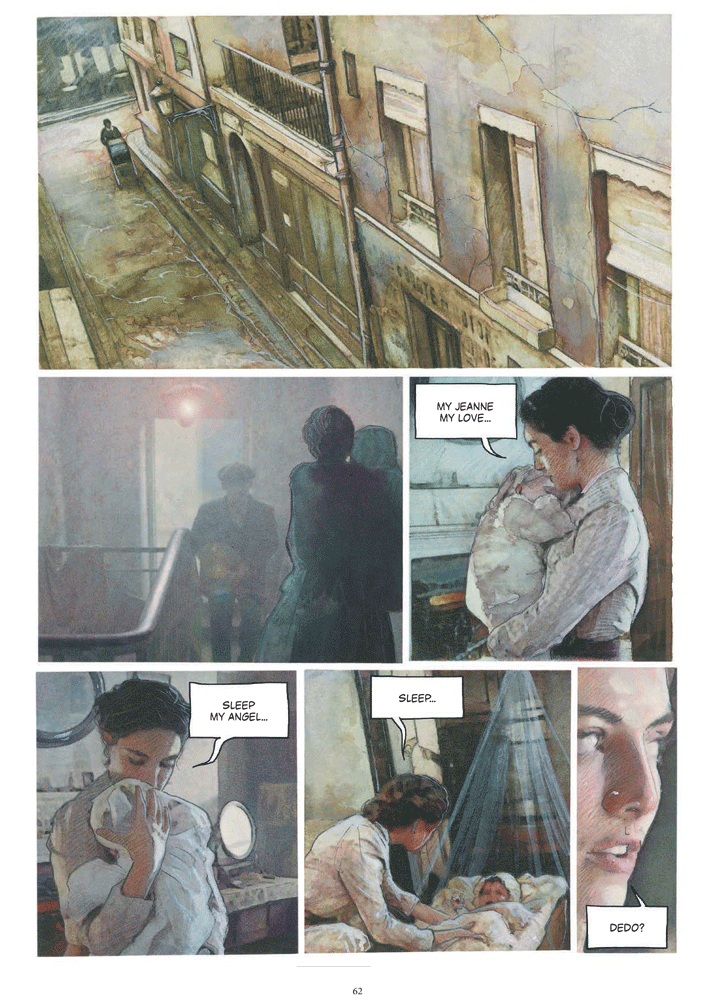 (In fact, having seen some of the pages in their original glory at the Institut Français event, I’d say the biggest flaw in this book is the slightly clumsy lettering, with oversized and sometimes insensitively placed boxes obscuring the art. Le Hénanff’s pages deserve to be seen as clearly as possible.)
(In fact, having seen some of the pages in their original glory at the Institut Français event, I’d say the biggest flaw in this book is the slightly clumsy lettering, with oversized and sometimes insensitively placed boxes obscuring the art. Le Hénanff’s pages deserve to be seen as clearly as possible.)
As Modigiani approaches the end of his life, the book’s storytelling becomes a little fractured and elliptical. This might be a creative reflection of the artist’s increasing blackouts and lost days, but it also makes a key part of the book’s conclusion slightly unclear (if you’re not already familiar with that element of the story).
By the end, Zbo is left holding the consequences of Dedo and Jeanne’s liason dangereuse. He refers to the late painter as a ‘giant’, but having seen the man at his worst, as well as the painter at his best, we’re left wondering if he’s just saying what he thinks his audience wants to hear.
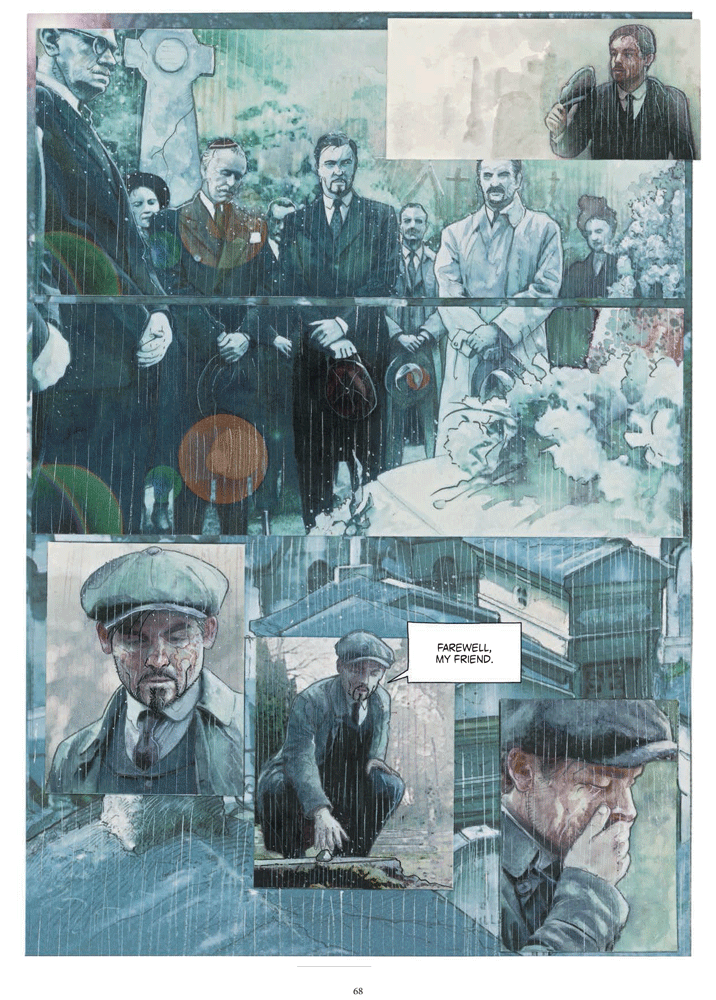 Modigliani is the second graphic novel to be published by Salammbo Press – a small operation run in London by Stéfane Houssier and Geraldine East, which previously published The Last Days of Stefan Zweig, also written by Seksik and illustrated by Guillaume Sorel, chronicling the final wanderings of the exiled Austrian writer and his wife.
Modigliani is the second graphic novel to be published by Salammbo Press – a small operation run in London by Stéfane Houssier and Geraldine East, which previously published The Last Days of Stefan Zweig, also written by Seksik and illustrated by Guillaume Sorel, chronicling the final wanderings of the exiled Austrian writer and his wife.
Treading similar thematic ground, Modigliani is a graphic novel that deserves to be seen in the bande dessinée album format. With its luminous artwork and thought-provoking examination of a complex human being, it’s well worth digging out if you’ve any interest in the blazing artistic environment of early 20th-century Paris.
Laurent Seksik (W), Fabrice Le Henanff (A), Joel Anderson and Stéfane Houssier (Tr) Salammbo Press, £13.99





